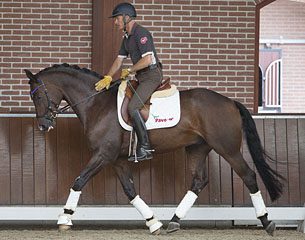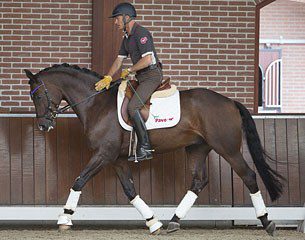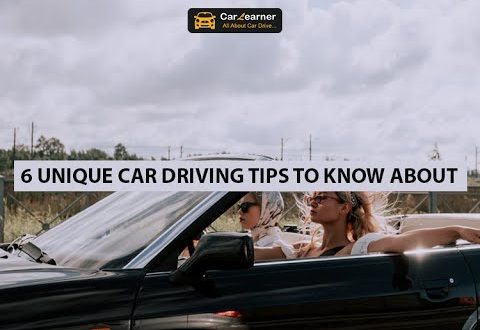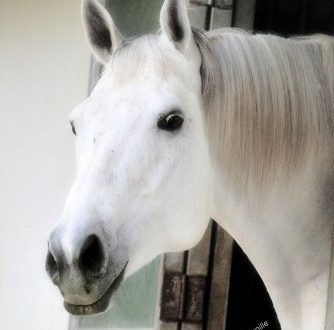
Rin van der Schaft: a factor most riders forget about
Rin van der Schaft: a factor most riders forget about

Rin explains: “This is the first step we go through when we start riding and is very important if you are interested in getting the foundation right. We can say that in this case you need to achieve the following: relaxation, movement forward and acceptance by the horse of contact. More specifically, the horse must not only accept the contact, but also find it enjoyable. I call this factor, this phase, “contact with the rein.”
“Drive the horse forward on the reins, don’t worry about the position of his head and neck until he accepts the snaffle and wants to stay in contact with your hand. Many riders believe that their horse is moving forward, but this is not always the case. In most cases, this is revealed to you as you progress through the learning process and have problems. And most likely, the problem will be connected with the contact.
“I believe that you should not try to influence the position of the horse’s head and neck and force them into a certain frame before the horse accepts the reins and goes into contact in his natural frame and balance. Even sooner than many riders think, the horse, when properly ridden, will begin to strive to adopt the right frame on its own.”
“When the horse instead resists the bit, he is telling you that he doesn’t like the contact and doesn’t trust your hand. She lays down on the reins to reduce discomfort. If you don’t let your horse do this, the ride will probably look better, but you won’t remove the reason why he behaves the way he does. You won’t solve the problem.”
Don’t start by fixing the horse’s head and neck in a certain position.
“I advise riders to just follow the horse’s mouth as far as they can. Once your horse trusts your hand, he will no longer resist the snaffle. She will find the position most comfortable for her. And it will not be the position in which she raises her head high or presses her chin to her chest.
And this statement makes sense. When you are lunging a horse without side reins, you will never see him constantly running either with his head up or down deep. Most of the time, she will move with her head in a forward-down direction.
So, how long does this phase last?
“It usually only takes a couple of days for your horse to learn to trust your hand. You can see significant improvements in a very short amount of time. However, I have also met horses that took weeks. I can assure you that a horse will not hold its head up if you accompany its mouth only in this case.
“When the rider’s hand follows the movement of the horse’s head and the contact remains consistent and soft, soon the horse will trust the hand and enjoy staying in contact with the reins. But you have to give your horse the time he needs.”
“From there, you can already begin to achieve a better movement forward and a firmer contact. But you won’t be able to take this step if your horse doesn’t trust your hand. This will definitely lead to contact issues. You will feel the impulse from the hindquarters in your hand if the horse makes contact, from that point on you can say you have it.”
“If you’re having trouble with the contact, move on to the ‘contact with the rein’ phase and make sure you’ve got it in place before taking the next step. And it doesn’t matter if you come back at the beginner level or at the Grand Prix level, allow your horse to go through this phase.
Connie Lunstra (source); translation Valeria Smirnova.





